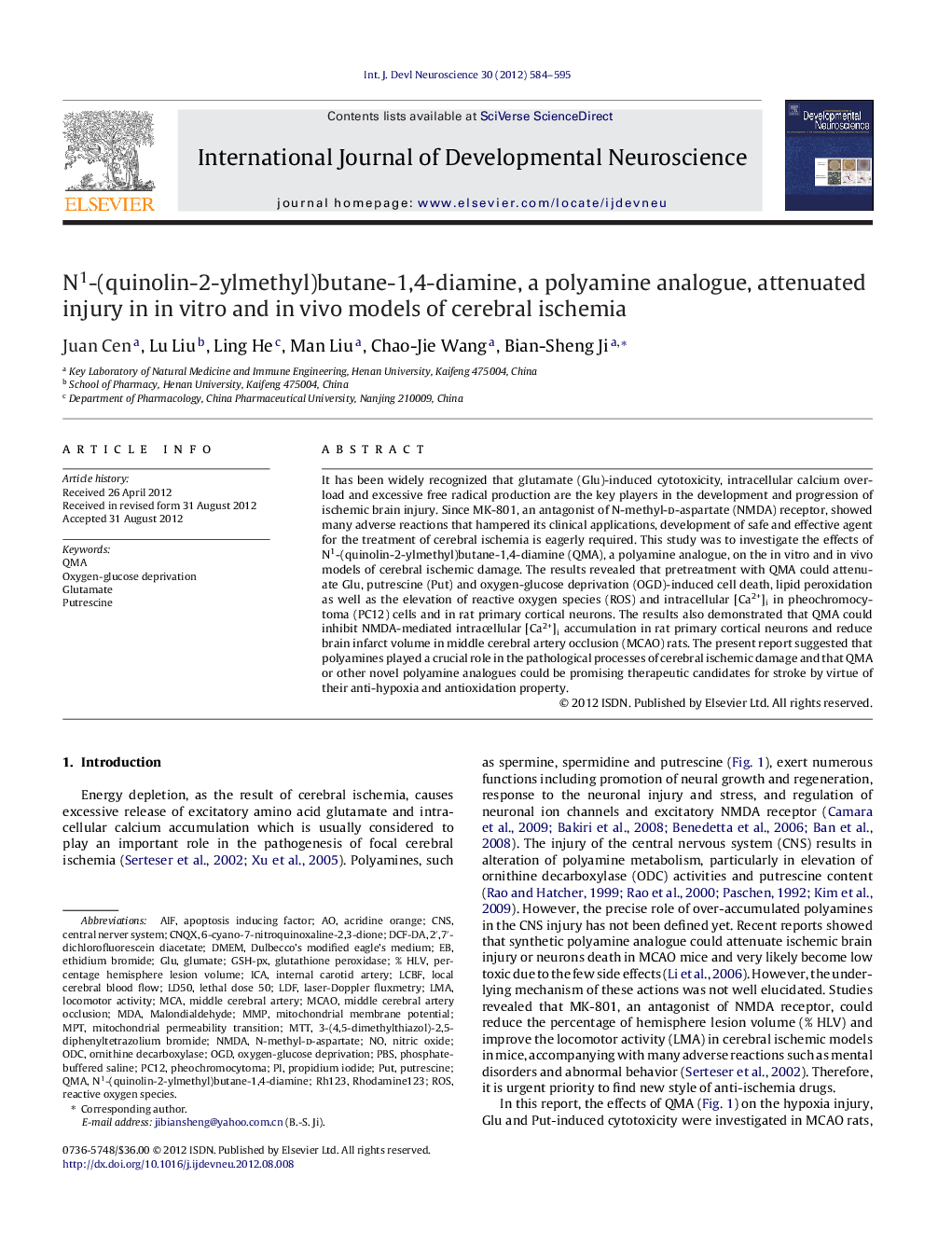| کد مقاله | کد نشریه | سال انتشار | مقاله انگلیسی | نسخه تمام متن |
|---|---|---|---|---|
| 2786200 | 1568409 | 2012 | 12 صفحه PDF | دانلود رایگان |

It has been widely recognized that glutamate (Glu)-induced cytotoxicity, intracellular calcium overload and excessive free radical production are the key players in the development and progression of ischemic brain injury. Since MK-801, an antagonist of N-methyl-d-aspartate (NMDA) receptor, showed many adverse reactions that hampered its clinical applications, development of safe and effective agent for the treatment of cerebral ischemia is eagerly required. This study was to investigate the effects of N1-(quinolin-2-ylmethyl)butane-1,4-diamine (QMA), a polyamine analogue, on the in vitro and in vivo models of cerebral ischemic damage. The results revealed that pretreatment with QMA could attenuate Glu, putrescine (Put) and oxygen-glucose deprivation (OGD)-induced cell death, lipid peroxidation as well as the elevation of reactive oxygen species (ROS) and intracellular [Ca2+]i in pheochromocytoma (PC12) cells and in rat primary cortical neurons. The results also demonstrated that QMA could inhibit NMDA-mediated intracellular [Ca2+]i accumulation in rat primary cortical neurons and reduce brain infarct volume in middle cerebral artery occlusion (MCAO) rats. The present report suggested that polyamines played a crucial role in the pathological processes of cerebral ischemic damage and that QMA or other novel polyamine analogues could be promising therapeutic candidates for stroke by virtue of their anti-hypoxia and antioxidation property.
► QMA attenuated glutamate, putrescine and OGD-induced cell death, and reduced brain infarct volume in MCAO rats.
► QMA inhibited NMDA-induced intracellular [Ca2+]i accumulation in rat primary cortical neurons.
► Polyamines may play a crucial role in the pathological processes of cerebral ischemic damage.
► QMA could be promising therapeutic candidates for stroke by virtue of their anti-hypoxia and antioxidation property.
Journal: International Journal of Developmental Neuroscience - Volume 30, Issue 7, November 2012, Pages 584–595